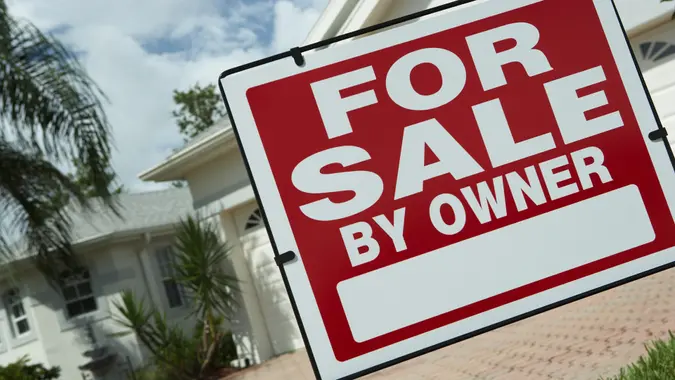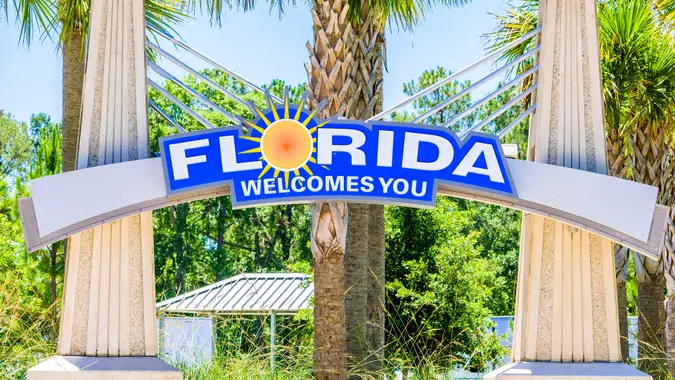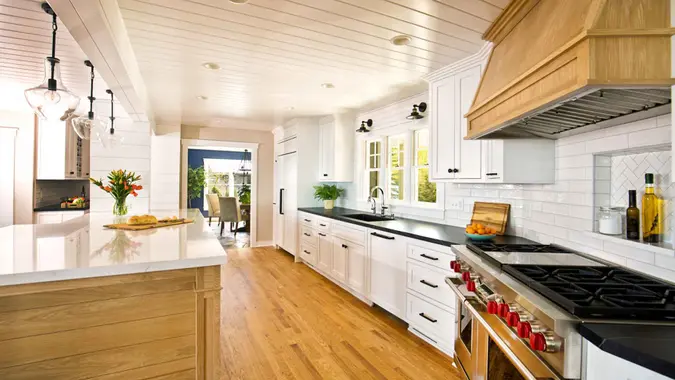I Asked ChatGPT Where To Buy a House for $2,000 a Month: Here’s What It Said

Commitment to Our Readers
GOBankingRates' editorial team is committed to bringing you unbiased reviews and information. We use data-driven methodologies to evaluate financial products and services - our reviews and ratings are not influenced by advertisers. You can read more about our editorial guidelines and our products and services review methodology.

20 Years
Helping You Live Richer

Reviewed
by Experts

Trusted by
Millions of Readers
With mortgage rates hovering around 6% and home prices still elevated in many markets, finding an affordable place to buy feels impossible. I asked ChatGPT to help figure out where $2,000 per month could actually get you a decent home in today’s market.
The AI’s response was both detailed and practical. Instead of just listing random cheap cities, ChatGPT broke down the math behind affordability and identified specific markets where that budget makes sense.
The Math Behind $2,000 Monthly Housing
ChatGPT started with the fundamentals, explaining that $2,000 per month can mean very different things depending on what’s included in that payment.
At current mortgage rates of 6% for a 30-year fixed loan, $2,000 a month for principal and interest alone could cover a home priced around $417,000 with 20% down.
But if you need to include property taxes, insurance and HOA fees in that $2,000 budget, your home price range drops to about $334,000 instead. This math lesson was actually helpful because many people don’t realize how much taxes and insurance add to their monthly payment, especially in higher-cost areas.
The Best Regions for Your Budget
ChatGPT organized its recommendations by geographic region, focusing on areas where $250,000-$350,000 homes are common in safe, livable neighborhoods.
For the Midwest and Great Lakes region, the AI highlighted Cleveland with a median home price around $180,000 and lots of inventory under $300,000. Indianapolis made the list with a median around $250,000 and a strong job market, while Milwaukee offered suburban options around $280,000.
The South provided several options including San Antonio, Texas, with a median around $290,000 and strong military and tech employment. Huntsville, Alabama, appeared as a fast-growing area with homes around $280,000 and low property taxes. Even Tampa suburbs in Florida were mentioned as possibilities if you avoid the expensive beachfront areas.
Mountain and Plains States Opportunities
ChatGPT identified opportunities in less obvious markets like Omaha, Nebraska, with a median home price around $280,000 and good schools and job opportunities. Boise suburbs in Idaho made the cut, though the AI warned that city prices are higher while outer areas remain affordable.
Tulsa, Oklahoma, stood out with a median price around $210,000 and very affordable utilities and cost of living, making it one of the most budget-friendly options on the list.
East Coast Possibilities
Even the expensive East Coast had some options, according to ChatGPT. Pittsburgh offered a median price around $220,000 with great cultural amenities and low overall costs.
Richmond, Virginia, appeared with a median around $300,000, mixing historic charm with relative affordability. The AI also mentioned Raleigh outskirts in North Carolina, noting that while the city itself is pricier, suburban areas still have homes in the $250,000-$300,000 range.
ChatGPT’s Strategic Recommendations
The AI organized its final recommendations by lifestyle preferences rather than just listing cities randomly.
For urban convenience, ChatGPT recommended Pittsburgh, Cleveland or Indianapolis. These cities offer cultural amenities, job opportunities and walkable neighborhoods while staying within budget.
For warm weather combined with low taxes, the AI suggested Texas, Alabama or Florida suburbs. These areas provide year-round comfort without state income taxes eating into your budget.
For up-and-coming growth areas with future potential, ChatGPT highlighted Huntsville, Raleigh outskirts and Omaha as markets that could appreciate while remaining affordable today.
What ChatGPT Got Right
The AI was all about practical over theoretical. Instead of just recommending the cheapest cities in America, ChatGPT considered factors like job markets, safety, amenities and future growth potential.
The mortgage math explanation was also valuable. Many people don’t realize that their $2,000 monthly budget might only leave room for a $250,000 home once you factor in taxes, insurance and other costs.
ChatGPT’s regional organization made sense too. Rather than randomly listing cities, grouping recommendations by geography helps people consider climate preferences, proximity to family and regional economic conditions.
The Limitations of AI Advice
While ChatGPT’s recommendations were helpful, the AI acknowledged that housing markets change quickly and local conditions can vary even within the same city.
The median home price data ChatGPT used provides general guidance, but actual availability and neighborhood quality can differ dramatically. A $250,000 home in one part of Cleveland might be move-in ready in a great area, while the same price elsewhere could buy a fixer-upper in a questionable neighborhood.
The AI also couldn’t account for personal factors like job opportunities in your field, proximity to family, school district quality for families with children or specific lifestyle preferences that might make one city perfect for you and terrible for someone else.
More From GOBankingRates
 Written by
Written by  Edited by
Edited by 

























